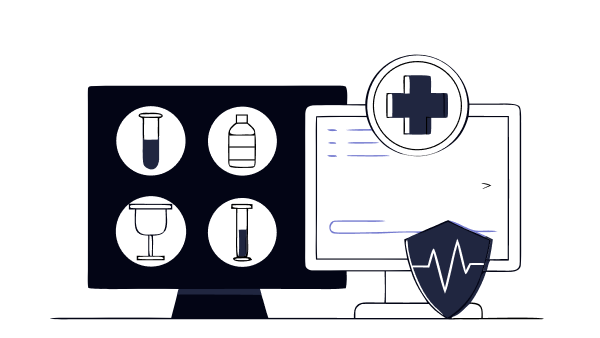Regulation (EU) 2017/745, known as MDR (Medical Device Regulation), has completely transformed the regulatory landscape for medical devices in Europe. This regulatory framework replaces the old directives (MDD 93/42/EEC and AIMDDD 90/385/EEC), imposing stricter requirements to ensure safety, traceability and transparency throughout the medical device lifecycle.
For manufacturers, understanding and correctly applying the MDR is essential to maintain access to the European market. In this article, we explain in a practical way what this regulation implies, what its main requirements are and how a specialized laboratory like Med-Lab IBV can help you to comply with it effectively.
What is MDR Regulation 2017/745?
The MDR (Medical Device Regulation) is the European regulation governing the design, manufacture, testing, certification and marketing of medical devices in the European Union. It came into full application in May 2021, after a transitional period that allowed manufacturers to adapt to the new obligations.
Unlike the old directives, the MDR is a directly applicable regulation, which means that it is mandatory in all Member States without the need for national transposition.
Its goal is clear: to enhance patient safety and increase market confidence through more rigorous technical and clinical evaluation.
Main new features of the MDR
The MDR has introduced a much more demanding approach to the validation of medical devices. Among the most relevant changes are:
Review of device classification 🔹 1.
Products are now classified into classes I, IIa, IIb and III, according to their level of risk. Many devices that were previously considered low risk (such as certain implants or reusable products) have been reclassified, which implies new testing and certification requirements.
🔹 2. Reinforced clinical evaluation.
Strong clinical evidence is required to demonstrate the safety, efficacy and performance of the device. Manufacturers should conduct preclinical evaluations and biomechanical or functional trials, as well as post-market studies to ensure long-term performance.
🔹 3. Traceability and after-sales surveillance.
The MDR introduces the UDI (Unique Device Identification) system, which makes it possible to trace each device from its manufacture to its final use. It also obliges manufacturers to establish a post-market surveillance plan and a continuously updated risk management system.
Stricter requirements for notified bodies 🔹 4.
Notified Bodies (NBs) responsible for CE marking must meet more stringent criteria of independence and technical competence, which increases the reliability of the certification process but can also lengthen assessment times.
🔹 5. Transparency and expanded technical documentation.
More detailed technical documentation is required, with scientific justification for each parameter evaluated, and the publication of relevant information in the EUDAMED database, accessible to authorities and professional users.

Technical and preclinical trials required by the MDR
The MDR states that devices must demonstrate compliance through validated technical evidence. This includes mechanical, functional and biocompatibility testing to ensure the safety and performance of the product prior to market introduction.
Some of the most common tests are:
- Fatigue and structural resistance tests on implants (ISO 14801, ISO 7206, ASTM F382…).
- Bending, torsion and compression tests for plates, stems and prostheses.
- Biomechanical evaluations in simulated environments that reproduce real conditions of use.
- Biocompatibility and toxicology analysis according to ISO 10993 series.
Learn how we perform these tests in our accredited laboratory for mechanical testing of medical deviceswhere we apply ISO/IEC 17025 and MDR 2017/745 standards to ensure reliable results accepted by notified bodies.
How MDR affects manufacturers
The impact of MDR goes beyond testing. It involves a complete transformation in device lifecycle management.
🔸 New manufacturer’s responsibilities
The MDR requires the designation of a Person Responsible for Regulatory Compliance (PRRC) within the company. In addition, it imposes obligations regarding surveillance, traceability, and adverse incident reporting.
🔸 Increased investment in technical documentation
Dossiers should include information on design, materials, testing, risk management, clinical evaluation and post-market surveillance. An incomplete dossier may lead to delays in obtaining CE marking or even to withdrawal of the product from the market.
🔸 More rigorous review by Notified Bodies.
Notified bodies are applying stricter criteria and auditing manufacturers’ testing and validation processes in greater depth. Working with an ISO/IEC 17025 accredited laboratory simplifies this audit, as their results are officially recognized.
The role of accredited laboratories in compliance with the MDR
Specialized laboratories play an essential role in demonstrating compliance. An accredited laboratory acts as an independent third party that validates the product’s technical compliance with applicable standards.
In this sense, Med-Lab IBV offers a differential value:
- ISO/IEC 17025 accreditation recognized by ENAC.
- Extensive experience in testing surgical implants, exoskeletons and technical aids.
- Methodologies aligned with MDR, ISO 13485 and ASTM/UNE-EN standards.
- Technical interpretation and regulatory advice included in each report.
In this way, the results issued by Med-Lab IBV not only comply with the regulatory requirements, but also accelerate the CE evaluation and certification processes.
Practical example: from mechanical testing to regulatory compliance
Imagine a manufacturer developing a new generation hip prosthesis. According to the MDR, it must provide evidence of:
- Mechanical safety → Fatigue and endurance test according to ISO 7206-4.
- Durability and functional stability → Angular load test in accordance with ASTM F384.
- Biomechanical evaluation of movement → Functional validation in specialized laboratory.
- Regulatory compliance → Technical documentation supported by traceable and accredited results.
Med-Lab IBV performs all these tests under the same technical and regulatory framework, ensuring that the product meets the performance and safety requirements demanded by the MDR.
From compliance to competitiveness
MDR 2017/745 should not be seen as an obstacle, but as an opportunity to strengthen the quality, confidence and competitiveness of European manufacturers.
Complying with this regulation demonstrates commitment to patient safety, transparency in the supply chain and technical excellence in product design.
At Med-Lab IBV, we accompany manufacturers, engineers and quality managers throughout the technical validation process, helping them to reduce certification times and ensure regulatory compliance with guarantees.
Contact Med-Lab IBV to plan your assays according to MDR 2017/745 and optimize your validation strategy and access to the European market.



